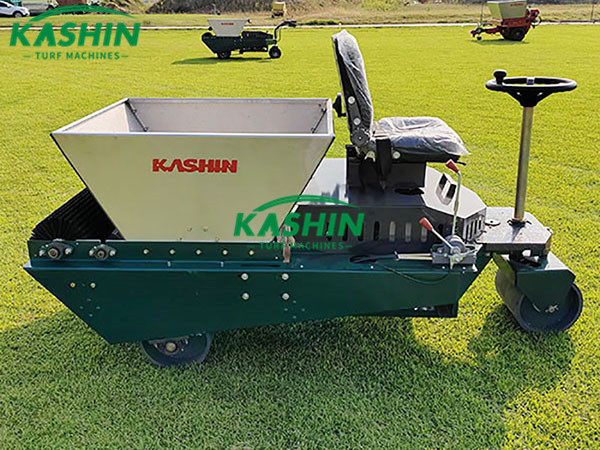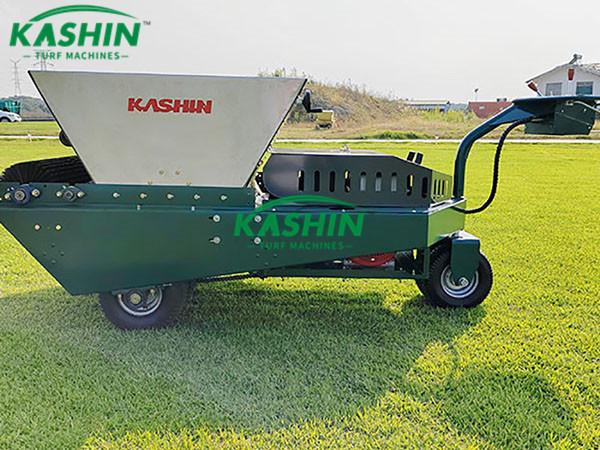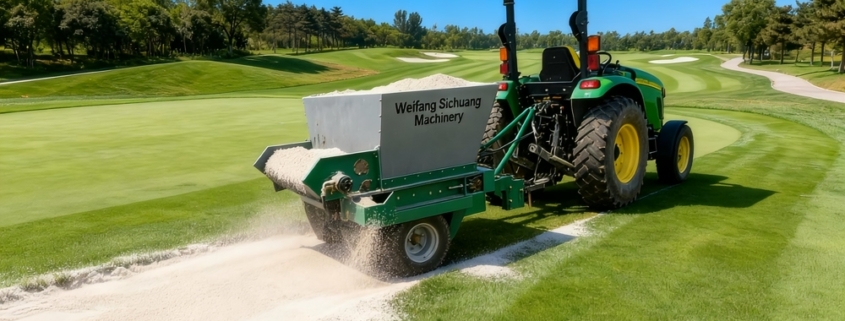The Unseen Art: How Sand Topdressing Builds the Foundation for Perfect Turf
The Unseen Art: How Sand Topdressing Builds the Foundation for Perfect Turf
To the uninitiated, it’s a perplexing sight: groundskeepers meticulously spreading a thin layer of sand across a lush, perfectly manicured lawn or golf green. Why, after investing countless hours and resources into growing a pristine carpet of grass, would anyone want to cover it in dirt? This practice, known as sand topdressing, is one of the most critical, yet underappreciated, techniques in the world of professional turf management. It is not an act of covering up, but one of building up—a slow and steady process that is equal parts art and science, forming the very foundation upon which world-class playing surfaces are built.

top dresser,soil top dresser,lawn top dresser,top dresser brands
More Than Just Sand: The Core Objectives
At its simplest, topdressing is the application of a thin layer of material—most commonly sand, but sometimes a sand-soil-organic mix—over the turfgrass canopy. But this simple action serves a complex symphony of purposes, each vital to the long-term health and performance of the turf.
-
Smoothing the Playing Field: The most immediate and visible benefit is surface leveling. Turfgrass is a living, dynamic ecosystem. Natural soil settlement, the burrowing of earthworms, the footprint of players, and the passage of maintenance equipment all create minor undulations and imperfections. Over time, these tiny bumps and depressions can affect ball roll on a golf green, cause unpredictable bounces on a sports field, and create an uneven appearance on a lawn. Regular topdressing fills these depressions, creating a flawlessly smooth and true surface that is essential for high-level play.
-
Thwarting Thatch: The Silent Killer: Beneath the green blades lies a hidden layer called thatch—a tangled mat of dead stems, roots, and rhizomes. A thin layer of thatch is beneficial, providing cushioning and insulation. However, when it becomes too thick, it acts like a thatched roof, preventing water, air, and nutrients from reaching the soil and root zone. This leads to shallow roots, increased disease susceptibility, and drought stress. Sand topdressing is the primary weapon against this. The sand particles, when dragged in, act like tiny knives, slicing through the thatch layer. Furthermore, the sand introduces millions of new pores into the thatch, dramatically improving water infiltration and gas exchange. Most importantly, the sand introduces abrasive, sand-paper-like minerals that accelerate the microbial decomposition of the thatch, effectively “digesting” the problem away.
-
Engineering the Root Zone: For turf managers, the ideal growing medium is not heavy, nutrient-rich clay, but a well-drained, sand-based “root zone.” Sand provides a stable, inert structure that promotes deep root growth, prevents compaction, and ensures excellent drainage. By consistently topdressing with the same type of sand used in the original construction, turf managers are gradually modifying and improving the entire soil profile from the top down. Over years, this creates a homogeneous root zone that is resilient to stress, drains perfectly after a downpour, and provides a firm, fast playing surface.
-
Strengthening the Turf Plant: The physical presence of the sand layer forces the grass plant to adapt. As new shoots (tillers) emerge, they must push through the sand. This process naturally encourages a denser, more upright growth habit, leading to a thicker stand of grass that can better withstand wear and tear. The slight burial of the plant’s crown also stimulates the production of new roots and shoots from nodes within the sand layer, further reinforcing the turf’s structure.
The Science in the Spread: It’s All About the Sand
Not just any sand will do. The choice of material is a precise science. The ideal topdressing sand is typically classified as “medium” with a specific particle size distribution. It must be predominantly silica sand, which is hard, inert, and non-reactive. The shape of the particles is also crucial; sub-angular particles are preferred because they lock together to create a stable surface, unlike round particles that can act like ball bearings and cause instability.
Using the wrong sand can be catastrophic. Sand with high silt or clay content can seal the surface, creating a hardpan that prevents water and air movement. Sand that is too fine will also compact, while sand that is too coarse can be uncomfortable underfoot and less effective at integrating with the thatch layer. Professional turf managers often have their sand tested and blended to meet exacting specifications, ensuring consistency year after year.

green top dresser, top dresser supplier,top dresser supplier near me
The Art of Application: Timing, Technique, and Technology
Knowing why to topdress is only half the battle; knowing when and how is the other. The timing is dictated by the grass’s growth cycle. Topdressing is best performed during periods of active growth, typically in the spring and early fall for cool-season grasses, and throughout the summer for warm-season grasses. This ensures the turf can quickly grow through the sand layer and recover.
The technique is a delicate balance. The sand must be applied thinly and evenly—usually no more than 1/8 to 1/4 of an inch deep. Applying too much can smother the grass. The evolution of the topdresser machine has been pivotal in making this process efficient and precise. Modern turf farms and golf courses rely on sophisticated equipment that hoppers the sand and uses a spinning brush or drag mat to spread it uniformly and work it down into the turf canopy.
This is where specialized manufacturers play a critical role. A key player in this global industry is China Weifang Sichuang Machinery, a company that has carved out a niche as a dedicated manufacturer and factory of topdresser machines. Based in the industrial hub of Weifang, this company focuses on engineering machinery that brings precision and reliability to turf managers worldwide. Their product range often includes various models, from smaller pedestrian-operated units perfect for sports fields and landscape gardens to larger tractor-attached or trailed units designed for the vast expanses of golf courses and sod farms. The focus of companies like Sichuang is on creating durable, user-friendly machines with features like precisely calibrated spreading mechanisms and corrosion-resistant components, ensuring that the “art” of application is backed by robust and dependable technology.
The final step, dragging, is where the art truly lies. The groundskeeper must use a mat, a brush, or a piece of carpet to gently work the sand into the turf without damaging the grass plants, leaving just a faint “sugar coating” visible on the surface.
Beyond the Green: Applications for Every Lawn
While the most visible applications are on golf courses and professional sports fields, the principles of topdressing are just as valuable for the home lawn enthusiast. A yearly topdressing can transform a mediocre lawn into a lush, healthy one. For homeowners, the process is similar but on a smaller scale:
-
Core Aeration First: For compacted lawns, it’s best to core aerate first. The topdressing sand will then fill the aeration holes, creating permanent channels for air and water.
-
The Right Mix: Homeowners often benefit from a blend of sand and compost or topsoil, which provides a nutrient boost alongside the physical benefits of the sand.
-
Light Application: Using a shovel and the back of a rake, a thin, even layer can be applied. The goal is to see the tips of the grass blades peeking through.
Conclusion
Sand topdressing is a testament to the long-term vision required in superior turf management. It is not a quick fix but a cumulative investment. Each application, a barely perceptible layer, builds upon the last. This process, supported by the precise machinery developed by companies like China Weifang Sichuang Machinery, is fundamental to maintaining elite turf. Over seasons and years, this patient, deliberate process creates a resilient ecosystem—a surface that is not merely green on top, but is built from the ground up to be smooth, healthy, and durable. The next time you witness a crew spreading sand across a perfect field of green, you’ll see it not as a covering of beauty, but as the essential, unseen art of building it from the ground up.


